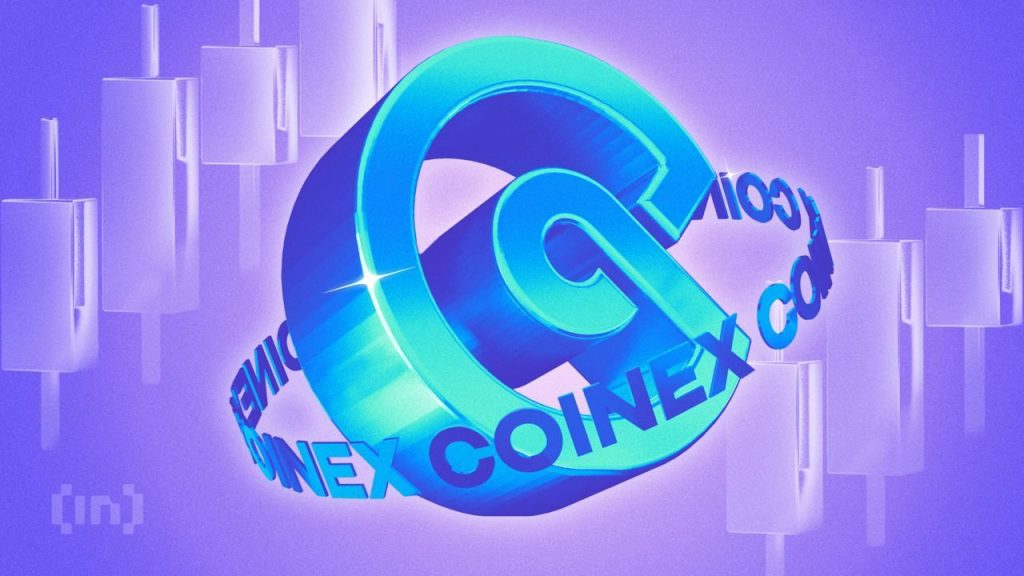The Interview With CoinEx at the WOW Summit

During this insightful interview at the WOW Summit in Hong Kong with Bonnie Chan, VP and lead researcher at CoinEx, we delve into the company’s future plans, its strategies to leverage the current market conditions, and the unique attributes that set it apart from its rivals.
We will explore the integration of Bitcoin into established financial systems, the impact of new technologies on its functionality, and the influence of changes in the global economy on its attractiveness.
Let’s jump into our interview to learn more about one of the top platforms’ predictions for the future of cryptocurrency.
How do you react in current market conditions , what is your nearest product and operational plan ?
The recent bull market rally has generated excitement across the board. Naturally, in such market conditions, users require access to information to facilitate their decision-making processes. As a result, we prioritize delivering valuable content to our users through platforms such as CoinEx Research and CoinEx Academy. Furthermore, we plan to introduce a range of products including P2P, Staking, and Copy Trading to meet our users’ demands and enrich their trading experience. Despite the bullish market, we remain steadfast in our commitment to sustainable growth over short-term gains, operating the exchange with transparency and accountability.
After attending the conference, what uniqueness and advantages you see Coinex compare to other relevant company within the industry ?
Compared to other platforms, our key strengths lie in our diverse range of assets, global presence, and comprehensive services and products. Regarding assets, we prioritize a “Good, Fast, and Comprehensive” approach to help users mitigate risks proactively and identify high-quality, high-potential projects. As a global exchange, we emphasize localized business development, employing tailored strategies for various regions and markets. To better serve our diverse global users, we offer support in 16 languages, round-the-clock customer service, and coverage in over 200 countries. Lastly, our focus on refining core products and functionalities, coupled with our expertise in addressing user concerns, ensures a seamless and enjoyable trading experience.
How might the integration of Bitcoin into traditional financial systems, like ETFs and futures markets, affect the cryptocurrency’s volatility and price stability post-2024 halving?
The integration of traditional financial funds into the Bitcoin market is set to significantly enhance its liquidity, which, in turn, will aid in stabilizing price fluctuations. Institutional investors often come with long-term investment horizons, and are expected to contribute further to Bitcoin’s price stability following the halving event. The potential involvement of insurance companies and pension funds underscores this effect, adding an additional layer of depth and stability to the market. Moreover, the futures market plays a crucial role in price discovery, facilitating a more accurate reflection of Bitcoin’s value. The entry of traditional financial entities normally brings more sophisticated and mature trading strategies, leading to a more efficient market. Consequently, this evolution is anticipated to result in reduced volatility, establishing a more stable trading environment for Bitcoin.
Considering the potential for increased institutional investment in Bitcoin, what strategies might institutions adopt to mitigate risks associated with the post-halving volatility, and how could these strategies affect the broader market?
Asset allocation is always the key to institutional investors. They probably set a target allocation for Bitcoin or other crypto assets, and periodically rebalance their portfolios in an attempt to align with their risk tolerance and investment goals of the mandates.
Hedging with the use of derivatives including both futures and options is also expected. By locking in prices or ensuring the option to sell at predetermined levels, institutions can insulate themselves from some of the risks associated with price fluctuations. The increased demand for derivatives can lead to a more robust and liquid market for these financial instruments, facilitating better risk management tools for all market participants.
Lastly, we also see growing interests and asset under management (AUM) into quantitative trading strategies among institutional investors. By employing algorithms to execute market-making, arbitrage, and delta-neutral strategies, quant funds aim to capitalize on market inefficiencies and volatility without taking directional bets on price movements. These sophisticated strategies can help stabilize the market by providing liquidity and narrowing the bid-ask spread, making it easier for all investors to trade.
How could the increasing trend of tokenization and the creation of Bitcoin-backed assets influence the liquidity and market capitalization of BTC?
Real World Asset (RWA) has been one of the most trending sectors in the first quarter of the year, ignited by Ondo Finance and that BlackRock also announced the entry of the space. The size of traditional asset classes, ranging from fixed income to equities, real estate to commodities, are much greater than that of any crypto assets. Taking gold as an example, the market cap of gold is 12x greater than that of Bitcoin. Therefore, the trend of tokenization and the creation of Bitcoin-backed assets would certainly open up a much wider range of financial instruments to both crypto and traditional investors, meaning a broader opportunity set for risk diversification. The implications of these extend beyond increased liquidity or capital inflow, poised to pave the way to bridge the gap between traditional finance and cryptocurrency ecosystem
Considering the emergence of Ordinals and BTC Layer-2 solutions, what impact could these technical advancements have on Bitcoin’s utility?
Bitcoin halving often ushers in new narratives and we see BTC layer 2 solutions stand at the forefront in this cycle. While existing BTC layer 2 solutions developed prior to 2023, such as Lightning, Stacks, Liquid or Rootstock, are generally simpler, focusing on enhancing Bitcoin’s primary use case as a payment system and store of value, we find that the new solutions launched since 2023 have paved the way for a broader spectrum in terms of Bitcoin’s utility.
Among these innovations, the Merlin Chain stands out with its Total Value Locked (TVL) surpassing $3.5 billion, integrating zk-rollup technology to enable higher throughput and privacy for transactions on its network. Similarly, the BEVM introduces EVM compatibility to the Bitcoin Layer-2 ecosystem, allowing decentralized applications (dApps) from the Ethereum network to operate seamlessly on Bitcoin’s infrastructure, thereby bridging two of the most significant ecosystems in the crypto space.
Furthermore, the emergence of Babylon as a staking protocol introduces the concept of Bitcoin staking, offering a novel mechanism for users to earn rewards, which previously was not inherent to Bitcoin’s design. Additionally, Nubit contributes to enhancing the ecosystem’s functionality by serving as a data availability layer, ensuring that data necessary for the operation of these advanced protocols remains accessible and secure.
In short, we think there is a lot more on the horizon in terms of the Bitcoin ecosystem and utility, and we look forward to exploring the investment implications.
How could the evolving landscape of mining technology and energy consumption impact Bitcoin’s network security and, by extension, investor confidence in the post-2024 halving market?
Even as mining hardware becomes more efficient, the mining difficulty algorithm adjusts to maintain consistent block production rates. Objectively speaking, some miners may be forced to shut down operations due to declining mining profitability influenced by factors such as rising energy costs or falling Bitcoin prices. This will cause a decline in the overall computing power of the network. Despite that, currently the entire Bitcoin mining industry is already a huge global market with many participants which underscore the robustness of the overall network.
Regarding energy consumption and environmental issues, although advancements in mining technology could enhance the energy efficiency of mining hardware, the entry of additional miners is likely to result in a net increase in the network’s overall energy consumption. Consequently, mounting environmental concerns and the possibility of regulatory intervention may continue to challenge the sustainability of Bitcoin mining. For investors, several aspects of the Bitcoin network stand out for their resilience: its adaptability, the strength of the mining community, and the increasing sophistication of Bitcoin participants at large. These factors are likely to garner more attention from investors, especially in the context of the anticipated Bitcoin halving.
In what ways could the development and adoption of competing cryptocurrencies, especially those with potentially superior technology or utility, impact Bitcoin’s dominance and price movements post-halving?
We think different cryptocurrencies have their unique positionings, use cases and values. Bitcoin is primarily developed as an asset for payment and more importantly store of value; Ethereum, on the other hand, is known for its smart contract capabilities; Solana positions itself as a high performance blockchain designed for decentralized applications and transactions.
It is reminded that the entire cryptocurrency ecosystem is still a small asset class compared to any other traditional asset classes. With that, we think not all competition is zero-sum. The technological advancement of various cryptocurrencies could indeed broaden and deepen the overall crypto market. In fact, the development of technologies enabling interoperability between different blockchains is playing out. We see Bitcoin could serve as a base or even a reserve currency for the broader crypto ecosystem, benefiting from the growth of the entire sector.
How might changes in the global economic landscape, such as inflation rates, interest rate adjustments by central banks, and geopolitical tensions, influence Bitcoin’s attractiveness as a digital gold?
We highlighted in our recent research report “Navigating the Bitcoin Halving” that the market capitalization trend of Bitcoin seems to correlate with global liquidity, as indicated by the assets of global central banks and as a cause of inflation. With the Fed signalling multiple rate cuts within the year, we expect more liquidity flowing into the crypto market, hencing a positive catalyst to the price movement of Bitcoin.
Further, geopolitical tensions often come with currency devaluation of the involved countries, such as Ukraine, Russia and Venezuela. The key utility of Bitcoin, store of value, precisely plays a crucial role in that end. In summary, changes in the global economic and geopolitical landscape could significantly enhance Bitcoin’s attractiveness as a digital gold, or an alternative asset class.
Given the historical pattern of post-halving bull runs, what specific market indicators and metrics should investors monitor to gauge the health and direction of the Bitcoin market in the lead-up to and aftermath of the 2024 halving?
There are a variety of market indicators and metrics for investors to gauge the market direction, and here are a number of selection tools. To begin with, the Fear & Greed Index, which aggregates data from volatility, market momentum and social media metrics, has emerged as a simple yet useful indicator for retail investors.
Secondly, the balance on exchange has often been seen as an important on-chain metric. A higher balance signals that traders deposit Bitcoins to exchanges, reflecting the potential selloffs and vice versa. A similar on-chain metric is the miner to exchange, which reveals the BTC flow from miners to exchanges.
Contrary to long-term holders, traders are playing short-term. With that, a number of derivatives-related metrics would be helpful in evaluating the near-term direction of Bitcoin, including the funding rate, open interest and liquidation map. Volatility is often observed when we see a surge in open interest or a heavy zone of the liquidation map.
Final thoughts
The interview with CoinEx’s Bonnie Chan at the WOW Summit in Hong Kong provided valuable insights into the company’s strategic vision and its impact on the cryptocurrency market.
CoinEx’s dedication to delivering high-quality content, its strong advantage in offering a wide range of assets and global reach, and its emphasis on cutting-edge products such as P2P, Staking, and Copy Trading are set to impact crypto trading.
Disclaimer
This article is sponsored content and does not represent the views or opinions of BeInCrypto. While we adhere to the Trust Project guidelines for unbiased and transparent reporting, this content is created by a third party and is intended for promotional purposes. Readers are advised to verify information independently and consult with a professional before making decisions based on this sponsored content. Please note that our Terms and Conditions, Privacy Policy, and Disclaimers have been updated.













